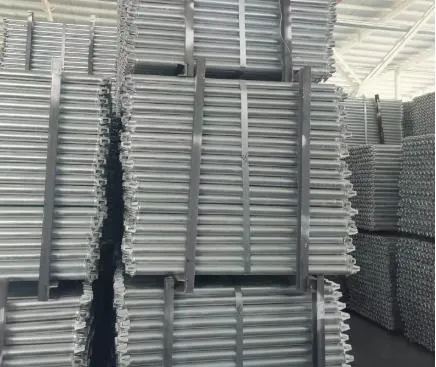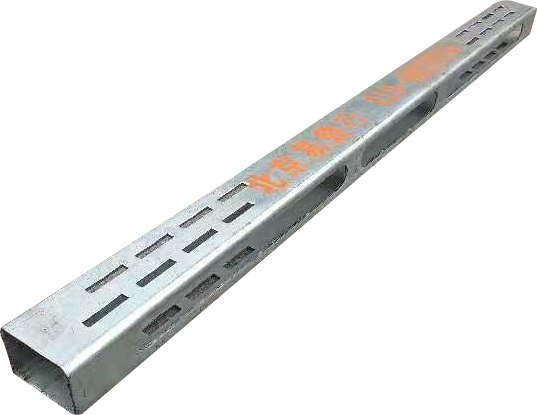
Feb . 19, 2025 05:31
Back to list
aluminium scaffolding for sale
When it comes to scaffolding, an essential component ensuring safety and stability are clamps. These devices are pivotal for securing various elements of scaffolding systems. Despite their commonplace usage, the array of clamps available often goes unnoticed. Each type serves a unique purpose and ensures the scaffold's integrity under different conditions and loads. Below is an exploration into the various types of clamps used in scaffolding, drawing from industry expertise and real-world application to provide a comprehensive view.
5. Board Retaining Clamps Designed to secure scaffold boards to the external framework, board retaining clamps ensure that walkway boards remain firm under the weight and movement of working crews. Their correct installation prevents accidents, providing a smooth and hazard-free surface. 6. Expanding Joint Pins Unlike conventional bolts and clamps, expanding joint pins join tubes end-to-end with a minimal profile. This feature is beneficial where close-knit scaffolding is required without the overlap of tubes that other clamps might mandate. Ease of use and the ability to withstand tension stress elevate their preference among seasoned scaffolding professionals. 7. Fixed Clamps Employed in scenarios demanding immovable connections, fixed clamps are crucial in environments where scaffolding must endure robust lateral forces. These heavy-duty clamps are imperative in constructions exposed to high winds or vibrations. 8. Beam Clamps Beam clamps are specialized for attaching scaffold structures to I-beams without the need for drilling, preserving the structural integrity of the beams themselves. These are especially pertinent in industrial or factory settings where downtime must be minimized. Employing the appropriate type of clamp isn't merely a matter of regulatory compliance but a strategic choice impacting safety, project timelines, and costs. Reliable manufacturers furnish couplers that meet international safety standards, like EN 74 or BS 1139, ensuring that projects remain on guard despite challenging circumstances. The evolution of clamp technology in scaffolding continues to progress, with advancements focusing on improving material resiliency, ease of use, and reducing weight without sacrificing strength. Staying updated on these trends can significantly enhance project outcomes. Selecting the right clamp type—backed by experience and expert insights—forms the backbone of a well-constructed, safe, and efficient scaffolding system. Trust in quality and thoroughness offers a reliable foundation for any construction endeavor.


5. Board Retaining Clamps Designed to secure scaffold boards to the external framework, board retaining clamps ensure that walkway boards remain firm under the weight and movement of working crews. Their correct installation prevents accidents, providing a smooth and hazard-free surface. 6. Expanding Joint Pins Unlike conventional bolts and clamps, expanding joint pins join tubes end-to-end with a minimal profile. This feature is beneficial where close-knit scaffolding is required without the overlap of tubes that other clamps might mandate. Ease of use and the ability to withstand tension stress elevate their preference among seasoned scaffolding professionals. 7. Fixed Clamps Employed in scenarios demanding immovable connections, fixed clamps are crucial in environments where scaffolding must endure robust lateral forces. These heavy-duty clamps are imperative in constructions exposed to high winds or vibrations. 8. Beam Clamps Beam clamps are specialized for attaching scaffold structures to I-beams without the need for drilling, preserving the structural integrity of the beams themselves. These are especially pertinent in industrial or factory settings where downtime must be minimized. Employing the appropriate type of clamp isn't merely a matter of regulatory compliance but a strategic choice impacting safety, project timelines, and costs. Reliable manufacturers furnish couplers that meet international safety standards, like EN 74 or BS 1139, ensuring that projects remain on guard despite challenging circumstances. The evolution of clamp technology in scaffolding continues to progress, with advancements focusing on improving material resiliency, ease of use, and reducing weight without sacrificing strength. Staying updated on these trends can significantly enhance project outcomes. Selecting the right clamp type—backed by experience and expert insights—forms the backbone of a well-constructed, safe, and efficient scaffolding system. Trust in quality and thoroughness offers a reliable foundation for any construction endeavor.
Share
Latest news
-
The Importance of Reinforcement Bar in ConstructionNewsJul.11,2025
-
The Durability of Timber Steel FurnitureNewsJul.11,2025
-
How to Assemble Fixed Clamp Scaffolding SafelyNewsJul.11,2025
-
Essential Column Rebar Specifications for High-Rise BuildingsNewsJul.11,2025
-
Common Applications of Steel Keels in ConstructionNewsJul.11,2025
-
Benefits of Using Aluminum Scaffolding Ladders Over SteelNewsJul.11,2025
-
Stainless Steel Keel: Analysis of the Triple Advantages of Rigidity, Stability, and LightweightNewsJun.19,2025
Related Products










